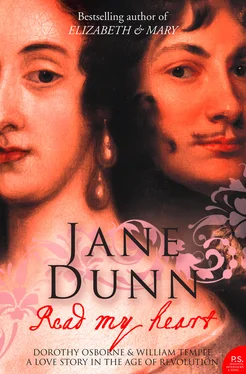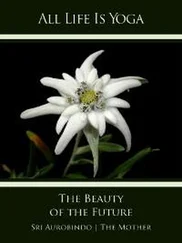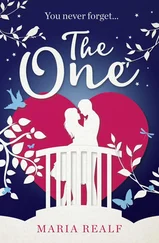Sir William’s intellectual and independent qualities of mind had been a large part of his attraction to Sir Philip Sidney. Educated at Eton, Temple had won a scholarship to King’s College, Cambridge, where he quickly showed an aptitude for philosophical debate. Controversially he there became a passionate advocate of the philosopher Ramus ‡ against the then orthodoxy of medieval scholasticism, with its highly convoluted definitions and terminology. Ramus had made a widely influential case for clarity, distinctness and analysis of all kinds, a systematisation of knowledge which turned out to be much easier to carry through in the new print culture. Temple’s annotated edition of Ramus’s Dialectics , arguing for a simplified system of logic, was dedicated to Sir Philip Sidney. It had the distinction of probably being the first book published by the Cambridge University Press in 1584. According to his granddaughter, William’s sister Martha, this was ‘writ … as I have bin told in the most elegant Latin any body has bin Master off’. 1
Sir William became provost of Trinity College, Dublin, in 1609 and was active in transforming the college and university so that it more resembled Cambridge. He was a lively presence around Dublin and was elected to the Irish House of Commons in 1613 as a member for the university. He was knighted rather late in his career and died five years later aged seventy-two and still in office. He had died in harness, although his resignation had already been mooted owing to ‘his age and weakness’. 2 His granddaughter noted that he died as he had lived, with a certain blitheness and a concern with learning, ‘with little care or thought of his fortune’, 3 and so had only a modest estate to pass on to his heir.
Sir William Temple’s elder son, Sir John Temple, was our William’s father. The family’s friendship with the family of the Earl of Essex continued through the next two generations. Sir John too had a distinguished career, as member of both the Irish and English parliaments and, most significantly, as Master of the Rolls * in Ireland. Born there in 1600, his life and fortune were to be very much bound up with that country. In the service of Charles I he was knighted in 1628. The next ten years were spent in a very happy marriage to Mary Hammond with the subsequent birth of seven children, five of whom survived infancy. The tragic death of his wife in September 1638, nine days after their twins were born, was a heavy blow to Sir John. Leaving his children with family in England, he returned to Ireland by the beginning of 1640 to take up his position as Master of the Rolls. At the beginning of the civil wars, he was forty-two years old and had just been elected a member of parliament for County Meath.
Although his efforts on behalf of the crown against the Irish rebels in 1641 had been much appreciated by the king, in the ideological conflicts his sympathies increasingly lay with the parliamentarians. He became one of the minor members of an influential cabal of disaffected aristocrats, called the ‘Junto’, concerned enough with the king’s growing autocracy to plot his downfall. * In the summer of 1643 Sir John was imprisoned on Charles I’s orders, having been charged with writing two scandalous letters suggesting the king supported the Catholic rebels. He remained in close confinement for a year.
Sir John was eventually released and returned to his family in England, rewarded for what was considered unnecessarily harsh treatment with a seat in the English parliament in 1646. That year he published the book, probably partly written during his imprisonment, for which he would become famous: Irish rebellion; or an history of the beginning and first progresse of the generall rebellion … Together with the barbarous cruelties and bloody massacres which ensued thereon. This was a powerful partisan account of the rebellion, given emotive force by gruesome eyewitness reports and sworn statements. It caused an immediate sensation on publication, fomenting anger in England against the Irish and outrage back in Ireland. Its effects lived on over the centuries. It was used in part justification of Cromwell’s subsequent violent suppression of the Irish and decades later, in 1689, the Irish parliament ordered that it be burned by the common hangman. Ulster Protestants to this day still call on the powerful accounts of Irish atrocities in its pages to fuel their own partisan feeling.
In the summer of 1655 Sir John returned to Ireland, highly commended by Cromwell, to take up his old job of Master of the Rolls, a position that was reconfirmed after Charles II’s restoration. He was also awarded leases on various estates, specifically in the area round Carlow, amounting to nearly 1,500 acres of prime farmland, and Dublin, including 144 acres of what was to become Dublin’s famous Phoenix Park. Having managed skilfully to ride both parliament’s and the king’s horses, Sir John Temple lived a full and productive life: unlike Sir Peter Osborne, he managed to evade paying a swingeing price for his allegiances. However, dying in 1677 at a good age, he ended his days an old and successful, but not particularly rich, man. He had always hoped that his eldest son would not do as he and his father had done, but would establish the family finances securely by marrying a woman of property. Instead he had lived to see his beloved son and heir turn his back on repairing the Temple family fortune to repeat the pattern of his forefathers, in this respect at least, and follow his heart.
Sir John Temple had married a woman with an eminent intellectual lineage from the professional rather than the landed classes. Mary Hammond was the daughter of James I’s physician, John Hammond, and the granddaughter of the zealous Elizabethan lawyer the senior John Hammond who was involved with the interrogation under torture of a number of Catholic priests, including the scholar and Jesuit Edmund Campion. Mary was the sister of Dr Henry Hammond, one of the great teachers and divines of his age who became a highly regarded chaplain to Charles I and whose sweetness of disposition endeared him to everyone.
While this branch of the family dedicated itself to saving the royal body and ministering to his soul, another brother Thomas and a nephew Robert were in just as close proximity to the king but actively engaged in supporting his enemies. Thomas Hammond sat as a judge at Charles I’s trial and Colonel Robert Hammond, having distinguished himself fighting for parliament during the first civil war, ended up as governor of the Isle of Wight and, albeit reluctant, jailer of the king. This was one of the many families where passionately held convictions, translated into civil war, split brother from brother, mother from son.
The Temples and the Hammonds were not aristocratic families but both excelled as successful administrators and scholars. What qualities of intelligence and energetic pragmatism they had were united in the children of Sir John and Lady Temple. Into the mix went a high degree of physical attractiveness and charm, for the Hammond genes produced their mother Mary, known as a beauty, and their uncle Henry, whose good looks were remarked on even by his colleagues, along with his inner grace: ‘especially in his youth, he had the esteem of a very beauteous person’. 4
Within ten months of the marriage, Mary fulfilled every expectation of a young wife and produced her first child, the precious son and heir. William Temple was born on 25 April 1628. His father had just been knighted and the family’s fortunes were looking up. William was born at Blackfriars in London and was followed by a sister, Mary. This little girl died aged two, when William was four. Two months before her death a second brother, John, was born, followed by James two years after that. Then another daughter, again named Mary, was born in 1636 but she also died, this time aged five, when her eldest brother was thirteen.
Читать дальше












